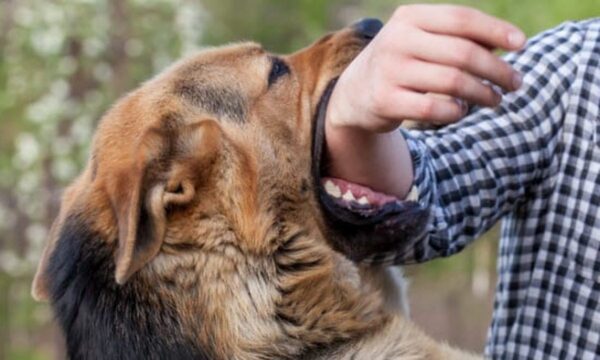While pets bring joy, companionship, and unconditional love into our lives, there are rare but tragic cases where the bond between humans and their pets turns deadly. This article delves into some shocking incidents involving pets that have caused harm or even killed their owners. We'll explore these cases, what happened, and the lessons we can learn to ensure a safer environment for everyone.
Dogs are often called "man's best friend," but there are instances where they have turned against their owners. For example, in 2019, a woman in the U.S. was killed by her two pit bulls. The dogs had a history of aggression, but the owner had not taken proper precautions to secure them. Such incidents often occur due to a lack of training, socialization, or when the dog feels threatened.
Key Takeaway: Proper training and socialization are crucial for dogs, especially for breeds with strong protective instincts. Always supervise interactions between dogs and children or vulnerable individuals.

Exotic pets can be fascinating but dangerous. In a tragic case from 2021, a man in Canada was killed by his pet python. The snake, which had previously shown no aggressive behavior, wrapped around him and constricted. Owners often underestimate the power of large snakes and the risks involved in handling them.
Key Takeaway: If you choose to own an exotic pet, ensure you have extensive knowledge about its behavior, needs, and potential dangers. Proper enclosures and precautions are vital.
While cat attacks are less likely to be fatal, there have been instances where cats have caused serious injuries. For example, in 2020, a man in the U.S. suffered life-threatening infections after being bitten by his cat. The bite became infected, leading to severe complications. Aggressive behavior, particularly in cats with a history of stress or trauma, can lead to unexpected attacks.
Key Takeaway: Understanding your cat's behavior and providing a stress-free environment can help prevent aggression. Regular veterinary check-ups can also address any health issues that may affect their behavior.
In rural areas, larger animals like cows, horses, and pigs can pose dangers. In 2018, a farmer in the U.K. was trampled to death by a cow while trying to herd them. These incidents often occur when animals are startled or feel threatened.
Key Takeaway: Always respect the size and strength of farm animals. Use caution when handling them and ensure they are well-trained and accustomed to human interaction.
Knowledge is power when it comes to pet ownership. Research the species, breed, and individual temperament of your pet. Understanding their behavior can help you prevent dangerous situations.
Invest time in training your pets. For dogs, basic obedience training can make a significant difference in behavior. Socializing pets with different people, animals, and environments can help reduce anxiety and aggression.
Always supervise interactions between pets and young children or vulnerable individuals. This can prevent accidents and allow you to intervene if necessary.
If your pet displays aggressive behavior, consult a veterinarian or animal behaviorist. Early intervention can help address issues before they escalate.
there are several warning signs that a pet might become aggressive or pose a danger:
Body Language: Look for signs like raised hackles, a stiff posture, and a tail held high or wagging slowly. Ears pinned back or a lowered head can also indicate discomfort.
Vocalizations: Growling, barking, or hissing can signal that a pet feels threatened or defensive.
Avoidance Behavior: If a pet frequently tries to hide or escapes from situations, it may indicate stress or fear.
Resource Guarding: Protecting food, toys, or space can indicate possessiveness, which can lead to aggressive behavior if approached.
History of Aggression: Previous incidents of biting or snapping should always be taken seriously.
Changes in Behavior: Sudden changes in temperament, such as increased irritability or withdrawal, can be a sign of underlying issues.
If you notice any of these signs, it's important to consult a veterinarian or animal behaviorist for guidance.
If your pet shows aggressive behavior, take these steps:
Stay Calm: Keep your composure to avoid escalating the situation.
Remove Triggers: Identify and eliminate any immediate triggers causing the aggression, such as loud noises or other animals.
Give Space: Allow your pet to retreat to a safe space where they feel secure.
Avoid Punishment: Don’t punish your pet, as this can increase fear and aggression.
Consult a Professional: Seek advice from a veterinarian or a certified animal behaviorist for an assessment and training recommendations.
Monitor Behavior: Keep track of when and why the aggression occurs to provide useful information to professionals.
Consider Training: Enroll in a training program focused on socialization and behavior modification.
Addressing aggression early is crucial for safety and improving your pet's behavior.
While the idea of pets harming their owners is unsettling, understanding the reasons behind these incidents can help prevent future tragedies. By being informed, taking necessary precautions, and providing a safe environment, we can enjoy the companionship of our pets while minimizing risks. Remember, responsible pet ownership is key to a happy and safe household.
animal tags: Pets
We created this article in conjunction with AI technology, then made sure it was fact-checked and edited by a Animals Top editor.